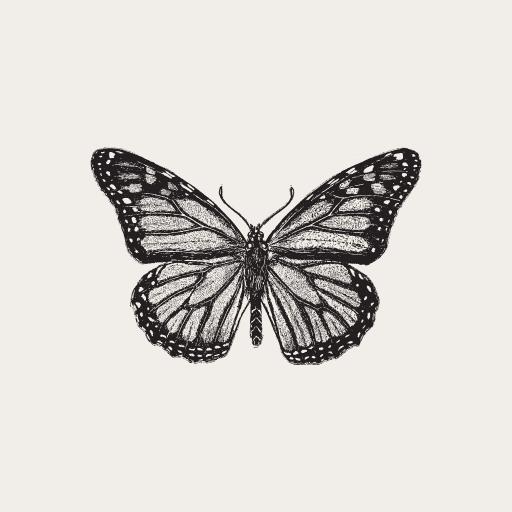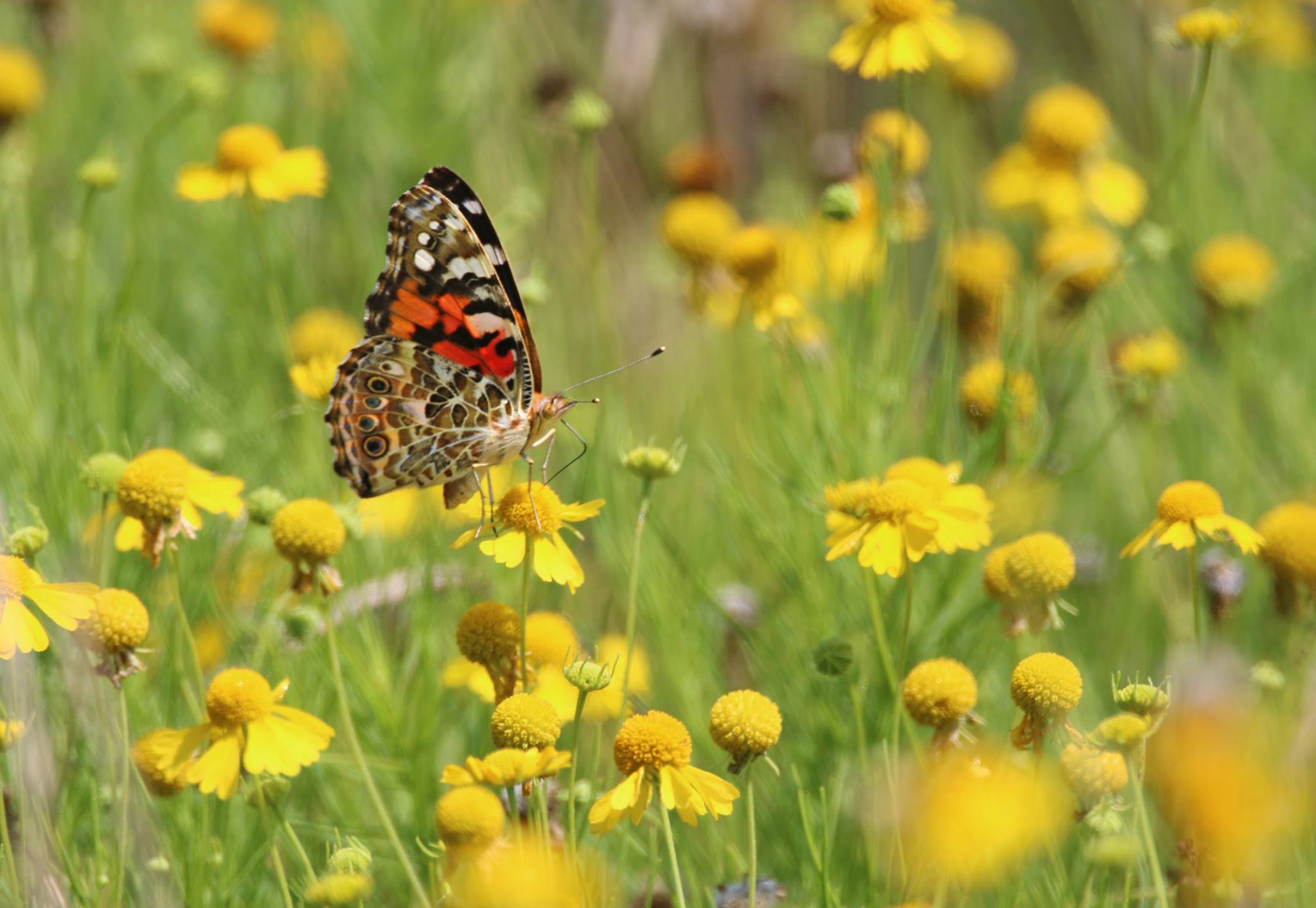Design Tips to Attract Pollinators & Beneficial Creatures
Imagine stepping into your garden, where butterflies flit between blooms, bees hum as they gather nectar, and birdsong fills the air. A wildlife-friendly garden isn’t just about plants—it’s about creating a small but powerful refuge, a place where nature finds a home.
As someone who’s spent years immersed in both conservation and the arts, I see gardens as living canvases—every plant a brushstroke, every visiting creature a sign that we’re restoring balance. By planting with intention, we can turn our outdoor spaces into thriving habitats for pollinators, songbirds, and other beneficial creatures. Whether you have acres of land or just a small backyard, every patch of soil can be a sanctuary.
In this guide, I’ll walk you through how to design a garden that welcomes wildlife—not just for beauty, but for the survival of species that depend on native plants.
Understanding the Role of Wildlife in Your Garden
Wildlife-friendly gardening isn’t about letting things go wild; it’s about thoughtful design that mimics nature.
Pollinators: The Heart of a Thriving Ecosystem
Bees, butterflies, hummingbirds—they’re more than just visitors; they’re essential workers in our ecosystems. Without them, many of our native plants wouldn’t survive. By providing nectar-rich flowers and safe nesting areas, we help ensure their future.
Beyond Pollinators: Why Every Creature Matters
A balanced garden includes more than just pollinators. Birds help control insect populations, frogs and toads keep pests in check, and beneficial insects like ladybugs and lacewings act as natural pest control. Even the unseen creatures—like soil microbes and decomposers—play a vital role in garden health.
Think of your garden as an ecosystem in miniature. The more life it supports, the healthier and more resilient it becomes.
Choosing the Right Plants
A wildlife-friendly garden starts with what you plant.
Prioritize Native Plants
Native plants evolved alongside local wildlife, providing the right food and shelter at the right time. Unlike many ornamentals, they support native pollinators, resist local pests, and thrive without excessive watering or fertilizers.
Examples of wildlife-friendly native plants:
- Milkweed (Asclepias spp.) – Essential for monarch butterflies
- Purple Coneflower (Echinacea purpurea) – Attracts bees & goldfinches
- Bee Balm (Monarda spp.) – Loved by hummingbirds & butterflies
- Goldenrod (Solidago spp.) – A crucial late-season nectar source
Ensure Year-Round Blooms
A garden that offers food in every season is a lifesaver for pollinators. Plan your plantings so something is always in bloom from spring to fall.
Provide Host Plants for Butterflies
Butterflies need more than nectar; they need places to lay eggs and food for their caterpillars. Monarchs need milkweed, swallowtails love parsley and dill, and fritillaries rely on violets.
When you plant for all life stages—not just the pretty adult butterflies—you create a true habitat.
Designing a Wildlife-Friendly Layout
Layer Your Landscape
Nature doesn’t grow in neat rows. Layer your garden with:
- Tall trees for nesting birds and shade.
- Shrubs for cover and berries.
- Flowering perennials for pollinators.
- Ground covers for sheltering insects and amphibians.
Create a Sun & Shade Balance
Butterflies and bees need sunny spots, while frogs and fireflies love damp, shady nooks. By mixing both, you invite a greater diversity of wildlife.
Add Water Sources
A simple dish of water with pebbles can be a lifesaver for bees on hot days. Small ponds or birdbaths will attract dragonflies, frogs, and songbirds. Keep water shallow and refreshed regularly to prevent mosquitoes.
Provide Shelter & Nesting Spaces
- Leave dead wood for native bees and beetles.
- Create brush piles for small mammals and birds.
- Install bee hotels, but ensure they’re well-maintained.
- Leave some leaf litter—many pollinators overwinter in it.
By designing with wildlife in mind, you turn your space into a true sanctuary.
Avoiding Harmful Practices
A garden that welcomes life must also protect it.
- Ditch Pesticides & Herbicides. Even organic pesticides can harm beneficial insects. Let nature balance itself.
- Use Natural Pest Control. Encourage ladybugs, lacewings, and birds to keep pests in check.
- Compost & Mulch. Build healthy soil naturally instead of relying on chemical fertilizers.
Every choice we make in our gardens ripples outward into the ecosystem.
Maintaining a Wildlife Garden Year-Round
Wildlife gardening isn’t just a spring project—it’s a year-round commitment.
- In fall, leave seed heads for birds and standing stems for overwintering insects.
- In winter, provide shelter by leaving brush piles and letting leaves stay put.
- In spring, resist the urge to tidy up too soon—many beneficial insects are still emerging.
- In summer, maintain water sources and keep flowers blooming.
By observing the rhythms of nature, we can create gardens that are in harmony with the seasons.
A Garden That Gives Back
A wildlife-friendly garden isn’t just a beautiful space—it’s a gift to the land, a refuge for struggling species, and a daily reminder of our connection to the natural world.
If you’re just starting out, don’t feel overwhelmed. Begin with a single native plant, a small water source, or a corner of your yard left wild. Little by little, you’ll see the difference.
Nature doesn’t need perfection—it just needs a place to belong. And when you create that space, you’ll find that you belong there too.
What will you plant first? Share your garden journey with me—I’d love to hear about it!
FAQ: Wildlife-Friendly Gardening
Native plants are the best choice for attracting pollinators. Examples include:
Milkweed (for monarch butterflies)
Purple Coneflower (for bees and goldfinches)
Bee Balm (for hummingbirds and butterflies)
Goldenrod (a late-season nectar source)
To attract butterflies, plant nectar-rich flowers like coneflowers and bee balm, and also include host plants for their larvae. For example, milkweed for monarchs, dill for swallowtails, and violets for fritillaries.
Birds need food, water, and shelter. Plant native trees and shrubs that provide berries, leaves for shelter, and build a birdbath or pond to offer water. Leave some dead branches or dead trees for nesting sites and insects.
Native plants are adapted to the local climate and soil conditions, meaning they generally require less water once established. However, during dry periods, regular watering may be necessary, especially for young plants.
Avoid using pesticides and herbicides, as they can harm beneficial insects. Instead, encourage natural pest control by attracting beneficial insects like ladybugs, lacewings, and birds.
You can provide shelter by leaving piles of brush, dead wood, and leaf litter, which are habitats for insects, amphibians, and small mammals. You can also install bee hotels or nesting boxes for birds.
In the winter, leave seed heads for birds, standing stems for insects, and brush piles for shelter. Avoid cleaning up too much, as many insects overwinter in leaves or tall grasses.
Absolutely! A wildlife-friendly garden can be just as beautiful as a traditional one. By choosing native plants and designing with wildlife in mind, you can create a vibrant, colorful space that supports both beauty and biodiversity.
Even small spaces can make a big impact! Start by adding a few native plants, a small water feature, or leaving a corner of your yard wild. Over time, you can expand your efforts as you see the benefits.
To start, choose a few native plants that are well-suited to your area. Focus on providing a variety of blooms throughout the seasons, and include features like water sources or areas of shelter for wildlife. Begin with small, manageable steps and gradually expand your garden as you learn more and observe the benefits.

